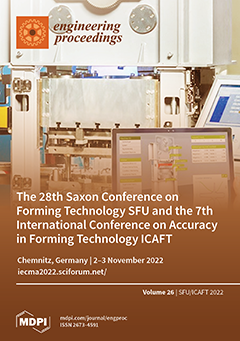Eng. Proc., 2022, SFU/ICAFT 2022
The 28th Saxon Conference on Forming Technology SFU and the 7th International Conference on Accuracy in Forming Technology ICAFT
Chemnitz, Germany | 2–3 November 2022
Volume Editors:
Martin Dix, Fraunhofer Institute for Machine Tools and Forming Technology, Germany
Verena Kräusel, Fraunhofer Institute for Machine Tools and Forming Technology, Germany
- Issues are regarded as officially published after their release is announced to the table of contents alert mailing list.
- You may sign up for e-mail alerts to receive table of contents of newly released issues.
- PDF is the official format for papers published in both, html and pdf forms. To view the papers in pdf format, click on the "PDF Full-text" link, and use the free Adobe Reader to open them.




